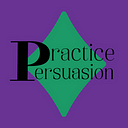Rhetoric Tricks Used In Speeches
Being able to speak correctly and with persuasion was always a bit difficult to many of us.
However, the best speakers such as: Winston Churchill, Cicero, Barack Obama, Martin Luther King, John F. Kennedy and many more, they had to master their rhetoric tricks in order to write a fulfilling speech.
Or the speech could’ve been written by someone else and they could just read it, but that’s something easy to catch.
Why easy ?
Because when you write a speech you not only write words that you want to say or the point you want to make.
You have to put emotions in every single word that you have written or else you will be considered as one of the worst orators in front of many people.
Anyway, here are some examples of rhetorical figures.
1. Anadiplosis
Theory says that is basically repeating the last word of previous sentence or phrase at the beginning of the next one.
For example:
“Work is difficult, difficult and demanding.”
Here the anadiplosis was brought up by the word “difficult”, seems like something easy right ?
Let’s see another, maybe more popular example
“Hard times create strong men. Strong men create good times. Good times create weak men. And weak men create hard times.”
— Michael Hopf, Those Who Remain
Now you see how it can emphasize the importance of the message and create a sense of rhytm.
2.Antimetabole
Again starting with the theory which says that it involves repeating words or phrases in reverse order.
For example:
“Eat to live, not live to eat.”
— attributed to Socrates
In this example, whole phrase was put in the reverse order.
Another a little bit harder but still easy to catch.
“And we’ll lead, not merely by the example of our power, but by the power of our example.” —Joe Biden, 2021 inaugural address
In short antimetabole is a powerful rhetorical device that can add emphasis, clarity, and impact to speeches and texts.
3.Red heering
Also known as “bread with lard”, “false lead” or “red heering fallacy”.
It happens mostly by introducing irrelevant information to distract the listener from the important issue.
You can guess who uses it mostly and it’s an easy one.
The politicians.
Anyway here is a non political example:
“Our company is in a difficult financial situation, but look at the beautiful flowers I have on my windowsill.”
And other one this time more political:
Moderator: “Senator, how do you plan to address the issue of rising healthcare costs ?”
Senator: “Well, let me tell you, the real issue here is not healthcare costs, but rather the need to strengthen our national security. We need to focus on keeping our country safe from foreign threats before we can even think about healthcare.”
Red herrings can be a really effective strategy for avoiding difficult questions, but they can also be seen as a deceptive tactic, so keep that in mind before you use it.
4. Hysteron-proteron
This rhetorical figure changes the order of the events to increase their importance.
For example:
“First, you will pay me the money, and then you will receive your goods.”
Let’s bring some movies into it because rhetorical figures happens there most of the time, so here is an example:
“I’ll have peace when I’m done. But for now, we have war.” — Tony Stark, in the movie “Avengers: Infinity War.”
Here, the phrase “peace when I’m done” is placed before the action “we have war,”.
This creates a sense of urgency and emphasizes the importance of the current conflict in achieving the eventual goal of peace.
Thank you for reading this ❤
I hope you’ll come back to this article to repeat your knowledge on rhetorical devices which are quite useful even in normal life.
Ps. Here on my Instagram you can study the same thing but more with visual expression.
